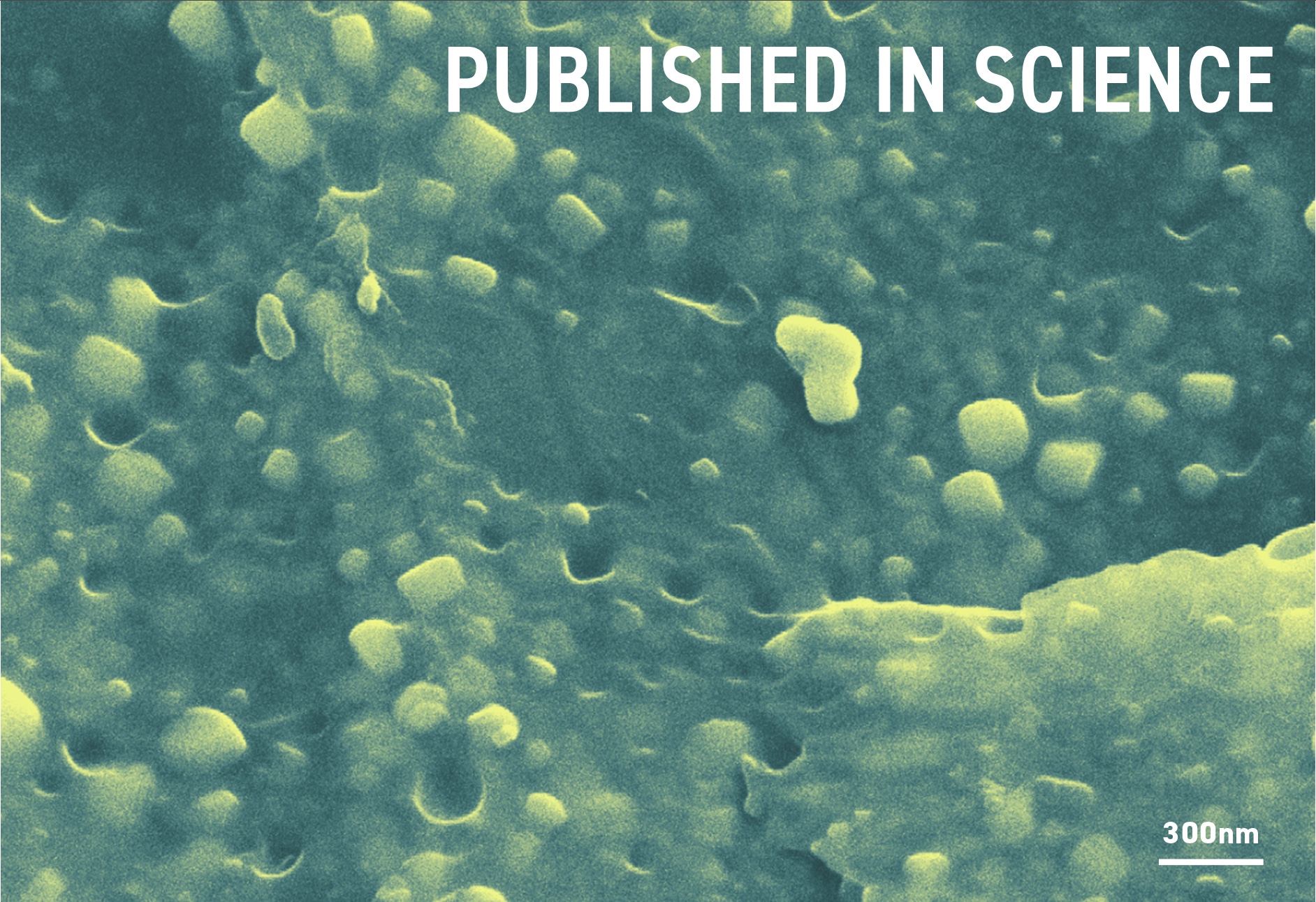Lead–halide perovskites are semiconductors that can convert light to electricity and vice versa. They are one of the main materials for next generation solar cells and are also being intensively studied for a range of other applications that involve converting electricity to light and one wavelength of light to another. This is exactly what you need for touch screens on electronic devices.
One of the most efficient, and therefore desirable lead–halide perovskites is made from caesium, lead and iodine (CsPbI3). Unfortunately, it doesn’t work well at ambient temperatures or if it gets wet. It also leaches dangerous lead, causing a health problem for users and difficulties in recycling.

Scanning electron micrograph showing perovskite nanocrystals embedded in the MOF matrix
Researchers led by Dr Jingwei Hou and Prof. Lianzhou Wang at the University of Queensland, along with collaborators at Cambridge and Leeds Universities, have managed to overcome these limitations. They’ve made a new composite glass that has CsPbI3 nanocrystals embedded in a highly compatible glassy material called a metal–organic framework (MOF). The MOF stabilises the structure of the perovskite nanocrystals, making them able to work at ambient temperatures, and also increases their efficiency by 100–1000 fold. The composite is incredibly tough and resilient making it ideal for developing into unbreakable glass screens for smartphones, computers and TVs. Due to the minute size of the perovskite nanocrystals, it will also deliver crystal clear image quality.
Microscopy Australia’s University of Queensland facility, the Centre for Microscopy and Microanalysis, was used by the team as they began to understand and test various recipes for their composite.
J. Hou et al., Science 2021 DOI: 10.1126/science.abf4460
Array
November 30, 2021